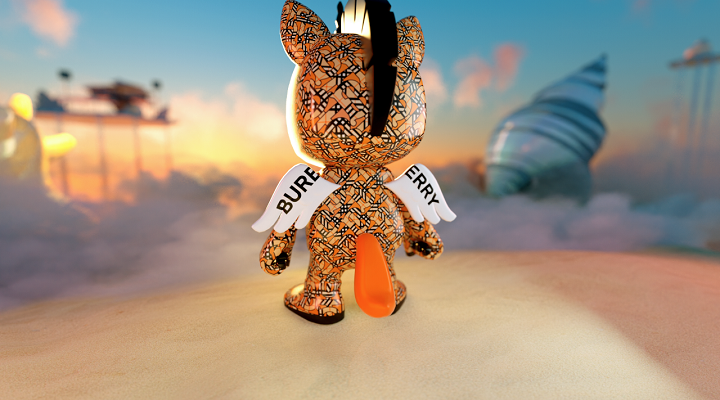The fashion industry has been a leader in adopting new technologies and circular-economy initiatives in recent years. Heritage and luxury brands such as Burberry, Gucci, and Tommy Hilfiger have sought new channels to engage a youthful audience. During the pandemic, direct-to-consumer e-commerce brands took centre stage, including popular Australian activewear brand LSKD. And Nike and Adidas entered the metaverse at full speed.
Throughout 2022, there were numerous headlines indicating a monumental shift in innovation across retail and that customers were keen to get back to physical shops while retaining the convenience of hybrid shopping. As a new normal emerged, so did successful e-commerce brands, creating a presence in our local shopping precincts. During the year, LSKD opened three physical stores – at Chadstone, Loganholme and Chermside.
But the most referred to ‘I’ word of late is inflation. It is at the front of everyone’s minds, as we are in an incredibly uncertain economic environment. The situation puts immense pressure on supply chains, businesses, society, and personal disposable incomes.
Yet consumer demand is not wavering and fashion trend cycles are shorter than ever due to social media, fast fashion, and technology. This is forcing brands to evaluate their business models and get resourceful with their marketing budgets to stay competitive.
In the recent State of Fashion 2023 report by The Business of Fashion and McKinsey & Co, findings highlight that brands are moving to alternative channels that could generate better return on investment. And for the year ahead, these brands need to pay attention and set future-focused strategies.
Here are three areas of strategy that will be prominent for leading retailers around the world over the next 12 months.
The store is media
Doug Stephens’ book Reengineering Retail was published in 2017. Known as The Retail Prophet, Stephens included a section called The Store is Media. He writes that “physical experiences are more memorable and measurable than any other form of media.” Stephens implores retailers to look at their physical store
differently, and to switch from a single distribution channel to establishing experiential media channels.
The concept of the store as media is expanded upon with the reimagining of retail media networks. Third-party businesses pay to advertise on prominent e-commerce sites or at the point of sale as a way of reaching relevant audiences.
This occurs during critical parts of the shopping journey as customers are in discovery mode and potentially ready to purchase. The estimated value of digital advertising that retail media networks sold in the US in 2022 will amount to US$40 billion ($58 billion), Forrester Research data shows. That is a considerable figure in retail, and it is likely to increase, as Google is set to phase out third-party cookies on Chrome by 2024, which makes first-party data even more valuable to retailers.
In terms of media-focused stores, there is a move towards designing mixed-use spaces to host events and nurture communities, as well as gallery-like retail to showcase a highly curated assortment of products to order in-store and have shipped to your home. These focus on delivering highly localised experiences specific to a demographic and provide a solid platform for collaborative retail media networks among brands, online, and in-store.

Web3 retail
Speaking of nurturing community, Web3 technology is community-centred and designed to power the creator economy. As for its application in retail, the next evolution of the internet is set to completely transform the industry. In some instances that has started already. Web3 technology creates a shift to open and equal networks with greater transparency across authentication and proof of ownership. It works through decentralisation using blockchain technology and token-based economics.
Luxury fashion brands have embraced Web3 in their own unique way, through non-fungible tokens (NFTs). Burberry collaborated with blockchain digital game Blankos Block Party to create Burberry-themed in-game characters. Louis Vuitton embedded 30 NFTs into its own-branded mini-game Louis the Game; and Dolce & Gabbana auctioned a nine-piece digital and physical collection that sold for close to US$6
million in 2021.
These companies made global news and aren’t the only ones that have dabbled in NFTs. However, the bigger untapped opportunity here is leveraging Web3 technology for enhanced loyalty programs, verifying authenticity and provenance, digital collectables, immersive experiences, cross-platform functionality, and broader integration with internet of things (IoT) devices.
Some brands have recognised how this works for them, offering branded experiences that bounce between digital and physical environments. One example is NFT studio RTFKT, which Nike acquired in December 2021. RTFKT recently released an NFT that owners could redeem for a physical hoodie, then use their smartphone to activate an augmented reality experience when wearing it by pointing the camera at a QR code.
Another NFT brand, Deadfellaz, collaborated with Wrangler on a pair of jeans that include a near-field communication chip that directs the wearer to a digital experience via the browser on their smartphone. The digital to physical aspect, and vice versa, will be among the biggest strategies to change retail, and urge our community of fashion retailers to start working on their Web3 strategy.
Resale, recycle, upcycle
Waste and consumption remain significant concerns in fashion, with many brands launching internal circular processes and sustainable initiatives to reduce their environmental impact and provide a channel where their customers can move unwanted clothing conveniently.
Resale is one of the fastest-growing markets and in ThredUp’s 2022 Resale report, it’s predicted that apparel resale will reach an estimated US$218 billion by 2026. With such a steep increase coming, a need has opened up for management tools such as Resale-as-a-service. This enables retailers to participate in the resale economy by adding a widget to their product pages that lets customers conveniently move
their unwanted item directly to a resale marketplace when they’re ready.
Another option gaining popularity in fashion is upcycling pieces into refreshed garments. Sports apparel
brand Champion has partnered with Reborn – a sub brand of HoMie Clothing – to send large portions of
faulty and returned Champion clothing to Reborn, which are repurposed into one-of-a-kind pieces. Such an arrangement provides an avenue for large brands to divert returned and faulty items from going to landfill.
Mass-market brands are also investing in take-back schemes. These allow customers to hand in their unwanted items to be reintroduced back into the brand’s manufacturing process. However, there is some work to be done in this area to ensure transparency and legitimate positive impact as a result. It is difficult to know for sure what happens to your clothes when they become part of a take-back initiative.
Textile waste is a major issue, as millions of clothing items end up in landfills. Also helping to reduce this
number are textile-recycling centres, which can break down a variety of items and make them into new materials for use in other products.
Brisbane-based company BlockTexx recently opened its facility in Loganholme and uses proprietary technology to separate polyester and cotton materials, along with artificial intelligence to determine the
composition of fabrics and fibres.
There are a multitude of technologies and experiences that amplify product discoverability, deliver real-time connections, and provide avenues for circular consumption. The interesting path forward will be about layering these strategies to suit your retail model and customers. By defining future-focused business pillars, associated strategies and implementation methods, retailers can provide the type of adaptable framework required for the next era of retail.
This story first appeared in the February 2023 issue of Inside Retail Magazine.






